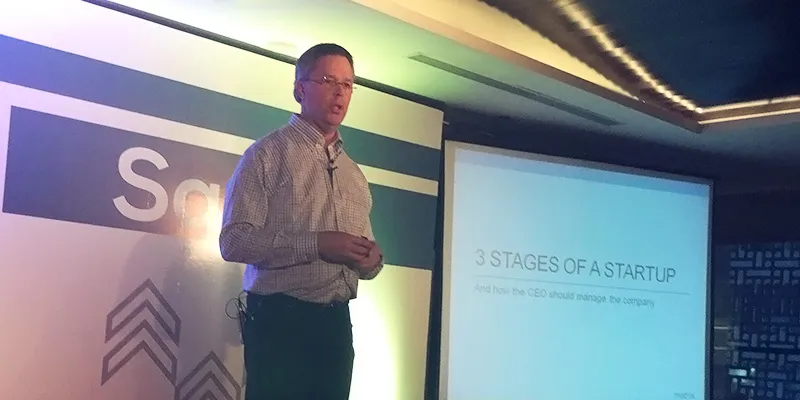Three stages of a startup by David Skok, General Partner, Matrix Partners
At the Matrix Partners' SaaS meetup , David Skok, a five-time entrepreneur turned General Partner at Matrix Partners, gave a few insights on SaaS economics. In his talk, David explained that SaaS businesses are fundamentally different from traditional businesses, and have their own model and metrics. His hour long presentation can be read in detail - the SaaS business model and metrics
The three fundamental phases in the life of a SaaS startup
According to David, a SaaS startup has three phases, namely:
- Finding the right product market fit
- Finding a repeatable, profitable and scalable sales model
- Scaling up the business
David states that often entrepreneurs think that they can create a repeatable and scalable sales model by hiring several sales people. “That’s a recipe for disaster. It ruins the ability to fine tune the model and to change it quickly,” adds David.

Problems with the SaaS model
David says that in SaaS, unlike other business, the amount one invests to acquire a customer is not recovered soon. It takes a longer period of time, which in turn looks as if you are making losses, but the model flips. He adds: “If you add ten customers then your losses get much worse than when you add two customers.”
How would you know if you’re building a successful business or not?
While the negative effect of acquiring customers makes a SaaS model look unprofitable, according to David there are ways to check if you are building a successful venture or not. The best way to judge profitability is through unit economics by asking this question: ‘Can I make more profit from my customers than it costs me to acquire them?’
One needs to look at variables like cost of customer acquisition (CAC) and lifetime value of a customer (LAV). David says that most entrepreneurs are completely convinced that the day they launch their app, they will not have to spend any money to acquire a customer: “This just doesn’t happen; people do not come to the app store that easily.”
Watch the full video of the talk:
The lifetime value of a customer
To understand the lifetime value of a customer, you need to look at the churn rate, that is, the percentage of customers that leave at the end of a period of time. David says that the churn is very crucial to your business model. There are two kinds of churns--one is where you lose customers, and the other is where you lose dollars. And these numbers can be very different.
To explain this he uses the example of two customers, one who pays USD 1000 for a month and another who pays USD 5000 for a month:
If you lose customer one, you have a 50 per cent customer churn and a 17 per cent dollar churn, but if you lose customer two, you again have a 50 per cent customer churn but the dollar churn will be 83 per cent.
David further adds that if you extend the customer base of customer 2 and make him pay USD 7000 monthly, then you have a 50 per cent customer churn but a negative dollar churn of -16 per cent.
It is important for SaaS businesses to have a negative dollar churn. Explaining negative churn he says: “You will lose customers, so it is important to replace what you have lost with increasing the number of customers who pay more.”
Adding another part to the sales funnel
By expanding revenue from existing customers, David says, that you add another part to the sales funnel, which focuses on upselling, expanding, and cross-selling. To create expansion revenue, you need to have other things to sell to a customer. “But if you have only one SaaS product, what more can you sell the customer? For that you need to have variable pricing axes.”
The variable pricing axes are a way of expanding the sales funnel. David says that for one product there can be different features like basic edition, pro edition, and enterprise edition, and you can even charge on the basis of the number of users.
Customer success – an important multi-departmental function
David stresses on the point that customer success now is not just the responsibility of the customer care department: “It is a multi-discipline function, and involves the product, sales, and marketing departments as well.”
Elaborating further he says that for a customer to like a product it needs to be well- designed, have great quality; the sales teams should not oversell it or sell it to the wrong customer; and the marketing team should not just be focussed on marketing the product to the prospects but also to the customer.
“Customer success isn’t about focussing on retention a month before the contract expires. It is about successful on-boarding and expansion of the customer base,” says David.
David gave a more in depth and detailing of customer success and growth hacking. Read more on it at the art science of growth hacking
Metrics to use to measure the SaaS business
Going back to the problem most SaaS businesses face of slower returns, David says the best way to measure a SaaS business is calculate the net new monthly, or annually, recurring revenue. This is done by adding new monthly or annually recurring revenue, or new customers, with the existing or expanding customers and subtracting the churned customers or monthly or annually recurring revenue.
Here's the full presentation:







